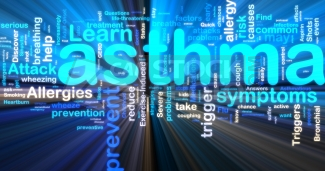Asthma medication that is inhaled is generally inhaled through a metered dose inhaler or a dry powder device. The metered dose inhaler can be used with or without a spacer. The majority of people with asthma refer to their inhalers as ‘puffers’. There is also another type of inhaler called a nebuliser. This inhaler uses pressurised air which is pumped into a liquid medication to change into a fine vapour. That is then inhaled. This inhaler is normally prescribed only for people with life-threatening asthma.
17 April 2011
Services and support agencies in Australia and Western Australia available to help
There are many services and support agencies that provide information about asthma and help asthma sufferers and their families. Some of theses agencies are listed below:
1. Asthma Foundation of Western Australia Inc, Phone: (08) 9289 3600 or 1800 645 130 (Freecall), Website: www.asthmawa.org.au
2. Bentley Bronchiatrix (WA), Phone: (08) 9359 2025, Email: mikebank@wasp.net.au
3. The Australian Lung Foundation (Western Australia Support Groups), Phone: 1800 654 301 or (07) 3357 6388 (Admin), Website: www.lungnet.com.au
4. Breathe Easy Ipswich Inc, Phone: (07) 3812 2576, Website: www.lungsbreatheeasy.org
5. National Asthma Council Australia, Phone: 1800 032 495, Website: www.NationalAsthma.org.au
Causes and factors associated with asthma
There is no known cause for asthma but there are many factors that are involved. These factors include:
- Genetic Factors: tends to run in families and many people with asthma also have other allergic conditions
- Environmental factors: many children grow up in carpeted homes which don’t allow much airflow and this encourages fast breeding of dust mites. Many children spend a lot time playing indoors where there are dust mites and no fresh air. Also being exposed to cigarette smoke inclines children to developing asthma and makes their symptoms more severe.
- Dietary changes: change in diet, such as higher intake of processed food, higher salt intake, lower antioxidant intake and lack of omega-3 fatty acids. This all contributes to the development of asthma.
- Lack of exercise: a decrease in exercise results in less stretching of airways
- Occupational exposure: Chemicals in workplaces such as dusts, gases, moulds and pollens, can cause asthmatic irritants in adults
Asthma symptoms
There is a range of symptoms for asthma, the severity of the symptoms and how often they are experienced. The most common symptoms are:
- Shortness of breath
- Wheezing
- Chest tightness
- Dry, irritating and continual cough
The symptoms are triggered by the airways narrowing. The symptoms are different for each person and can change over time.
Creating a safe environment for the child with asthma
Children with asthma need to be in an environment that doesn’t trigger attacks or worsen symptoms. This can be done by maintaining good air quality in the home. To maintain a safe environment for the child, the following things need to be followed:
- Do not smoke or allow other people to smoke in your home
- Avoid woodfires
- Avoid scented candles or room fresheners
- Change household cleaning products to unscented or nonaerosol
- Make sure that all gas appliances vent to the outdoors
- Change the air conditioning filter regularly
- Have the air conditioning running on days when there is a high pollen or mould counts
Educational and preventative programmes available within the community and schools
Asthma Child and Adolescent Program
The Australian Government is funding the Asthma Foundations in Australia as part of the national Asthma Management Program. The government is funding them to produce and distribute two new programmes to educate and support people who suffer from asthma.
The Asthma Child and Adolescent Program will offer information and training about asthma management and what to do in an emergency. This information and training is available for school and preschool teachers. The programme also offers information for parents.
Asthma Educators such as nurses and health workers, deliver over 200 sessions each year all over Western Australia. These sessions cover all topics about asthma and include:
· Facts, symptoms and triggers/causes
· Management control and medication/treatment
· Identifying and reacting to an asthma attack
· Linked conditions to asthma
· Asthma first aid
Asthma Friendly Schools Program
The staff at schools that have completed the asthma training provided by the Asthma Child and Adolescent Program are further encouraged to make their school, Asthma Friendly Schools. When a school becomes recognised as an Asthma Friendly School, the Asthma Foundation of WA provides the school with a free Asthma Emergency Kit along with support and other resources.
Subscribe to:
Posts (Atom)

